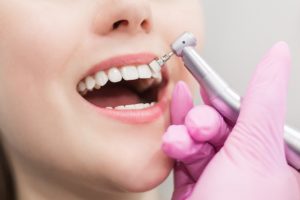There are many different dental procedures that your dental practitioner could recommend to you. It is incredibly important to understand what these are and your options. This comprehensive blog post aims to provide you with valuable insights into various dental procedures and their advantages. Whether you’re considering dental treatment for cosmetic enhancement or oral health improvement, this guide will help you make informed decisions and understand the benefits of each procedure.
The Importance of Dental Health
Your oral health plays a vital role in your overall well-being. Maintaining good dental hygiene is not just about having a bright smile; it is crucial for preventing serious health issues. Poor oral health can lead to gum disease, tooth decay, and even systemic diseases like heart disease and diabetes. By brushing and flossing daily, you can reduce the risk of dental problems significantly.
Regular dental check-ups and cleanings are essential for preventing and detecting dental issues early on. Your dentist can perform a thorough examination and address any concerns you may have about your oral health. Additionally, X-rays are valuable tools for identifying hidden dental problems, such as cavities between teeth or issues with the jawbone.
General Dental Procedures
Dental check-ups and cleanings
Regular dental check-ups, typically every six months, are essential for maintaining optimal oral health. During these visits, your dentist will examine your teeth and gums for signs of decay, gum disease, or other oral issues. Professional cleanings will remove plaque and tartar buildup, preventing dental problems and leaving your teeth feeling fresh and clean.
X-rays and their role in diagnosing dental conditions
X-rays are a valuable diagnostic tool in dentistry. They allow dentists to see the hidden structures of your teeth and jaw, helping them detect issues that may not be visible during a visual examination. X-rays aid in identifying cavities, infections, impacted teeth, and even potential tumours or cysts.
Fluoride treatments and dental sealants for cavity prevention
Fluoride treatments can help strengthen your teeth and prevent cavities. By applying fluoride to your teeth, dentists can remineralize weakened enamel, making it more resistant to decay. Dental sealants are thin, protective coatings applied to the chewing surfaces of molars to prevent cavities in the hard-to-reach grooves.
Restorative Dental Procedures
Dental fillings
Dental fillings are used to repair teeth affected by cavities or minor damage. They help restore the shape and function of the tooth while preventing further decay. Modern fillings are available in tooth-coloured materials, blending seamlessly with your natural teeth.
Dental crowns
Dental crowns, also known as caps, are used to cover and protect severely damaged or weakened teeth. Crowns can strengthen the tooth and improve its appearance. They are an excellent option for teeth with large fillings, fractures, or after root canal treatment.
Dental bridges
Dental bridges are used to replace missing teeth by anchoring artificial teeth to adjacent healthy teeth. This procedure not only restores your smile but also helps maintain proper bite alignment and prevents surrounding teeth from shifting.
Dental implants
Dental implants are a revolutionary solution for replacing missing teeth. They consist of titanium posts surgically placed into the jawbone, acting as artificial tooth roots. Implants provide a strong foundation for dental crowns, bridges, or dentures, restoring both function and aesthetics.
Cosmetic Dental Procedures
Teeth whitening
Teeth whitening is a popular cosmetic dental procedure that can dramatically enhance your smile’s appearance. Professional teeth whitening treatments can remove stains and discolouration, leaving you with a brighter, more confident smile.
Dental veneers
Dental veneers are thin, custom-made shells made from porcelain or composite resin. They are bonded to the front surface of teeth to conceal imperfections such as chips, stains, or gaps, creating a flawless and natural-looking smile.
Orthodontic treatments
Orthodontic treatments, like braces or clear aligners, are used to straighten misaligned teeth and correct bite issues. Straightening your teeth not only improves aesthetics but also makes oral hygiene easier and reduces the risk of dental problems in the long run.
Gum contouring
Gum contouring, or gum reshaping, is a cosmetic procedure that evens out an uneven gum line. This treatment can improve the proportion of your teeth, making your smile more balanced and aesthetically pleasing.

Periodontal Procedures
Scaling and root planing
Scaling and root planing are non-surgical procedures used to treat gum disease. They involve removing plaque and tartar from above and below the gum line and smoothing the tooth root surfaces to promote gum reattachment and healing.
Gum grafting
Gum grafting is performed to treat receding gums. During this procedure, gum tissue is taken from one part of the mouth and transplanted to areas where the gums have receded, protecting the exposed tooth roots and enhancing gum health.
Periodontal maintenance
After undergoing periodontal treatment, regular periodontal maintenance visits are crucial for preventing the recurrence of gum disease. These follow-up visits include thorough cleanings and evaluations to monitor your gum health.
Endodontic Procedures
Root canal therapy
Root canal therapy is used to save infected or severely damaged teeth from extraction. During the procedure, the infected pulp is removed, and the inside of the tooth is cleaned and sealed, preserving the tooth’s function and preventing further infection.
Apicoectomy
An apicoectomy is a surgical procedure performed when a previous root canal treatment fails to address persistent infection or inflammation around the tooth’s root tip. The infected tissue is removed, and the root tip is sealed to promote healing.
Oral Surgery Procedures
Tooth extraction
Tooth extraction is the removal of a damaged, decayed, or problematic tooth. Extractions may be necessary due to severe decay, overcrowding, or impacted wisdom teeth.
Wisdom teeth removal
Wisdom teeth, also known as third molars, often emerge in late adolescence or early adulthood. In many cases, they can cause pain, crowding, or even lead to infections. Wisdom teeth removal is a common procedure to prevent complications.
Jaw surgery
Jaw surgery, also known as orthognathic surgery, is used to correct significant jaw misalignments or abnormalities. This procedure can improve both aesthetics and functionality, alleviating issues with chewing, speaking, and breathing.
Sedation Dentistry
For many individuals, visiting the dentist can be anxiety-inducing. Sedation dentistry offers various techniques to help patients feel relaxed and comfortable during dental procedures. Depending on the level of anxiety or the complexity of the treatment, your dentist may offer options such as nitrous oxide (laughing gas), oral sedatives, or intravenous sedation.
Understanding different dental procedures and their benefits is crucial for maintaining optimal oral health and a beautiful smile. By becoming informed about various treatments, you can make well-informed decisions in collaboration with your dentist. Remember, regular dental check-ups and preventive measures are key to a healthy and radiant smile for years to come. We hope this guide has empowered you with the knowledge you need to take charge of your dental health and make informed decisions about your dental care.

